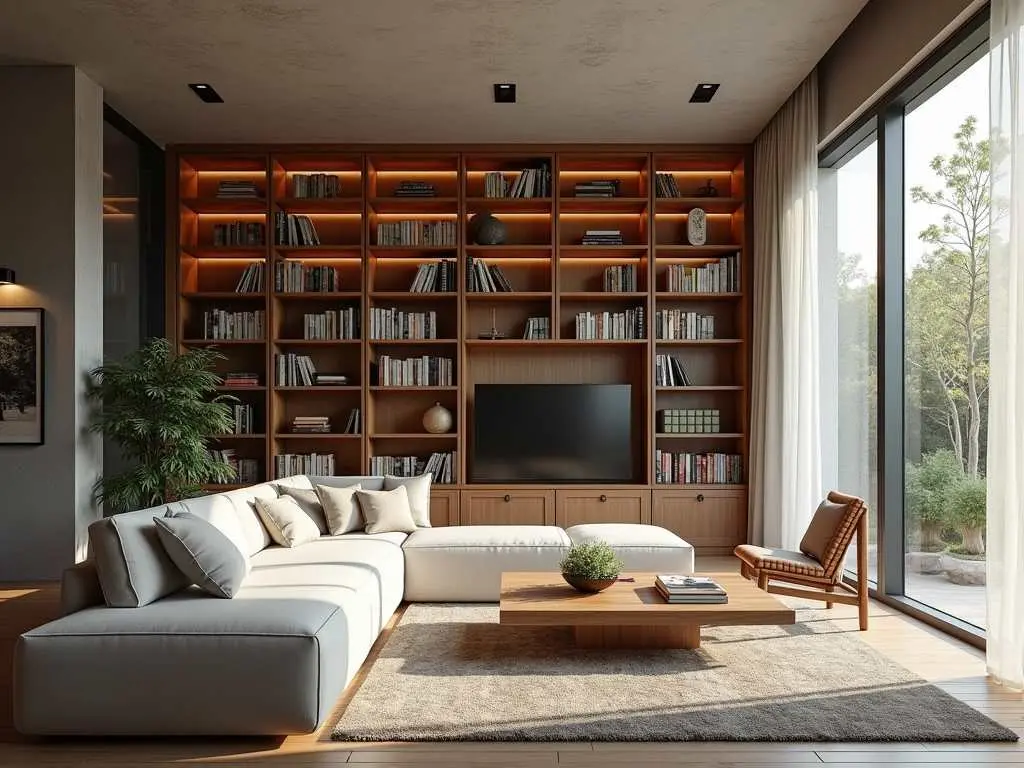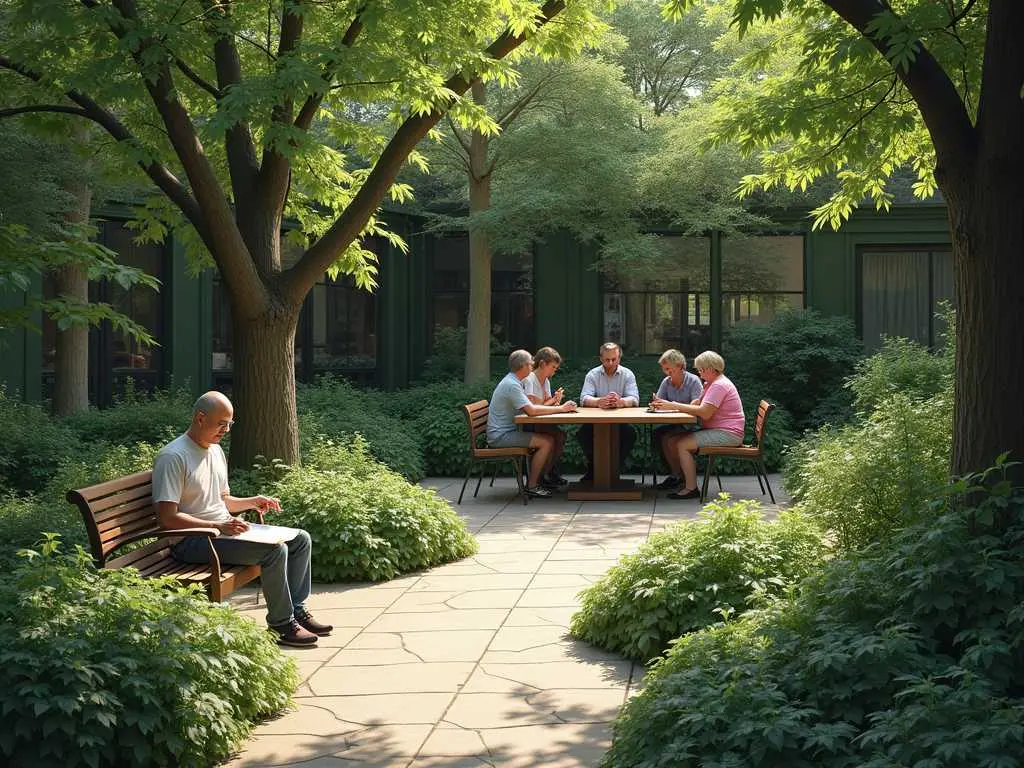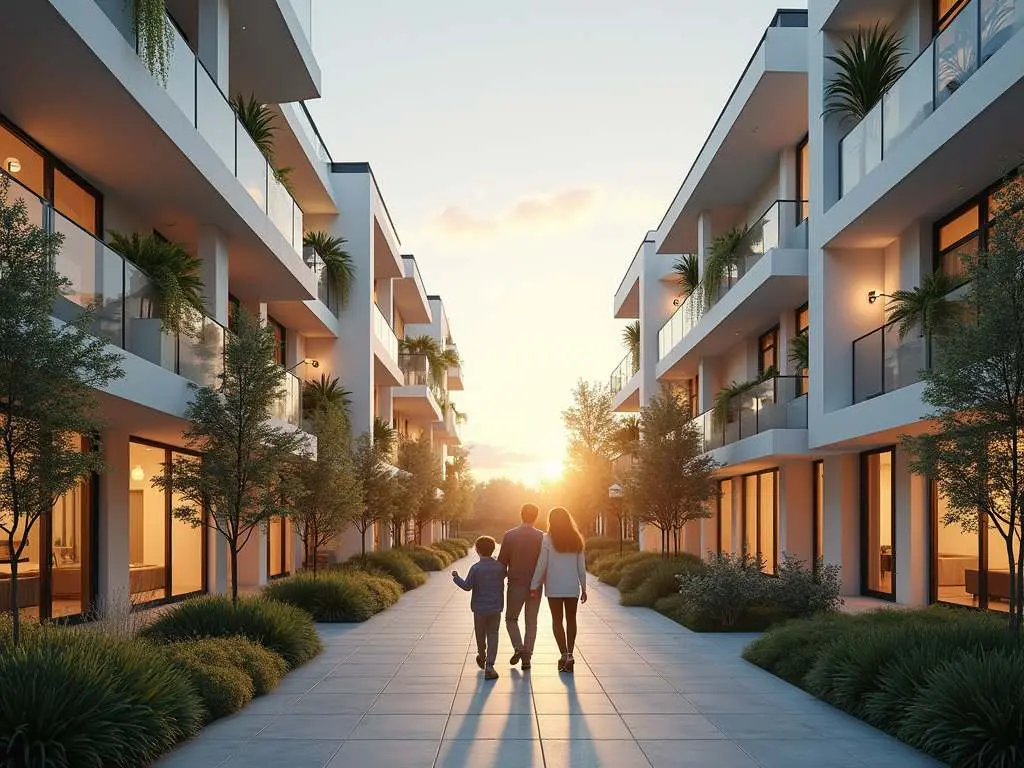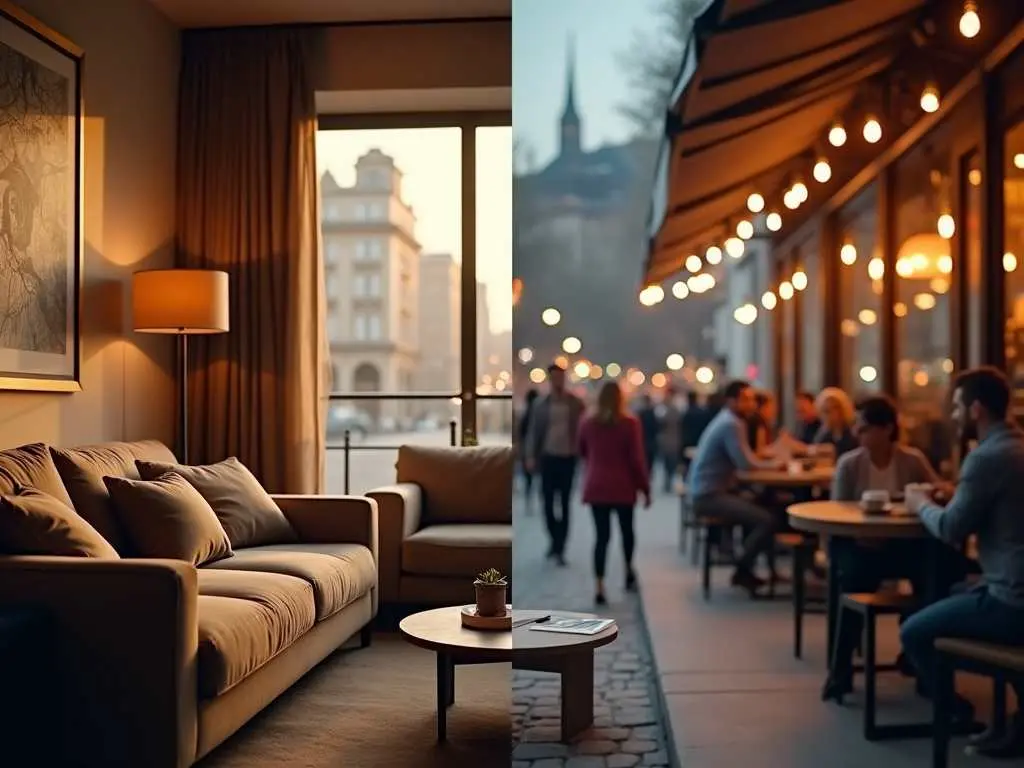Specializing in spaces that balance intimacy and interaction, I’ve witnessed how strategic design can blur the lines between private and public areas. At Curvspace, we craft thresholds that invite social engagement without sacrificing personal comfort. This article explores innovative methods to foster connectivity in semi-public zones.
Jump to:
Understanding Social Thresholds
Social thresholds represent the transitional spaces where private and public realms converge. These zones, often overlooked, play a crucial role in shaping social interactions and fostering a sense of community. As both physical and symbolic markers, thresholds dictate how individuals connect with their surroundings and each other.
The Dichotomy of Public and Private Spaces
Traditionally, architecture has distinguished between public spaces designed for community engagement and private spaces intended for personal retreat. However, modern trends increasingly blur these lines, giving rise to mixed-use developments that integrate residential, commercial, and recreational areas. This integration aims to foster a sense of community while maintaining individual privacy, a balance crucial for contemporary urban living.
Semi-Public Spaces: A Delicate Balance
Semi-public spaces occupy the middle ground between public and private, offering a unique blend of accessibility and intimacy. These areas, such as communal gardens, corridors in residential buildings, and shared workspaces, are generally accessible but governed by implicit social boundaries. The design of these spaces can significantly impact community building, providing a buffer that enhances both connectivity and a sense of security.
Innovative Design Methods for Blurring Boundaries
Strategic design can transform semi-public zones into vibrant spaces that encourage social interaction without compromising personal comfort. Several innovative methods can achieve this balance:
Soft Thresholds
Soft thresholds are designed to be easily traversed, creating a sense of openness and connection. These thresholds use visual and physical porosity to encourage interaction across different modes of research and practice, catalyzing both disciplinary and social connections.
Visual Connectivity
Maintaining visual connections within semi-public spaces enhances feelings of responsibility and control. Wide openings and permeable borders promote better connectivity with main movement flows and other public spaces, fostering a sense of community and safety.
Flexible and Multifunctional Spaces
Creating spaces that can adapt to various uses and activities is crucial for fostering community interaction. These flexible spaces can host anything from quiet leisure to bustling events, accommodating diverse user groups and promoting social cohesion.
Integrating Natural Elements
Incorporating nature into semi-public spaces enhances their appeal and promotes a sense of well-being. Natural environments have a human preference, and integrating green spaces encourages community values and contributes to the healthy living of residents.
Furniture Placement and Zoning

Strategic furniture placement can create zones of privacy within community living spaces. Using bookshelves or room dividers minimizes unwanted viewing and provides versatile, functional privacy zones.
Lighting and Shading
Careful consideration of lighting and shading can enhance the comfort and usability of semi-public spaces. Balancing natural light with shading elements ensures the space is inviting and functional throughout the day.
Community-Centered Public Parks
Community-centered public parks enhance urban quality of life by providing recreational spaces that foster social interaction, cultural expression, and environmental sustainability. These parks often integrate local history, culture, and natural elements, emphasizing the importance of geographical and cultural context.
Adaptive Reuse
Adaptive reuse involves transforming existing structures into communal spaces, breathing new life into forgotten buildings. This approach promotes sustainability and a resourceful architectural ethos.
Public Art and Cultural Installations
Integrating public art and cultural installations into semi-public spaces can foster community identity and encourage social interaction. These elements can serve as conversation starters and focal points, drawing people together.
Wayfinding and Signage
Clear and intuitive wayfinding and signage can enhance the usability of semi-public spaces. Effective signage helps people navigate the space, discover amenities, and feel more comfortable exploring and interacting.
Addressing Challenges and Considerations
While designing social thresholds, several challenges and considerations must be addressed to ensure success:
Balancing Privacy and Interaction

The key to successful semi-public spaces is finding the right balance between privacy and interaction. The design should allow for both social engagement and personal retreat, catering to the diverse needs of the community.
Ensuring Inclusivity
Semi-public spaces should be designed to be inclusive and accessible to all members of the community. This includes considering the needs of people with disabilities, families with young children, and individuals from diverse cultural backgrounds.
Maintaining Safety and Security
Safety and security are paramount in semi-public spaces. Design strategies should include adequate lighting, clear sightlines, and security measures to ensure residents feel safe and protected.
Addressing Environmental Concerns
Sustainability should be a key consideration in the design of social thresholds. Incorporating green infrastructure, native plants, and environmentally friendly practices enhances the space’s ecological value and reduces its environmental impact.
Case Studies: Successful Social Thresholds
Several case studies demonstrate the successful implementation of social thresholds in various contexts:
Bryant Park, New York City
Bryant Park transformed from an underutilized urban space into a dynamic community asset through strategic urban design. Its flexible spaces host a range of activities, and its commitment to safety and cleanliness has made it a vibrant hub for social interaction.
Superkilen Park, Copenhagen
Superkilen Park enhances social cohesion in a diverse neighborhood by prioritizing cultural representation. The park’s design incorporates elements from various cultures, fostering a sense of inclusivity and bringing people together.
Gas Works Park, Seattle
Gas Works Park exemplifies how urban spaces can preserve historical identity while meeting modern recreational needs. The park integrates the site’s industrial past with green spaces, offering a unique blend of history and recreation.
People Also Ask
What are the key elements of a successful semi-public space?
Successful semi-public spaces balance accessibility and intimacy, foster visual connectivity, integrate natural elements, and ensure safety and inclusivity
How can design promote social interaction in communal areas?
Consider using modular shelving units, installing a pegboard for customizable storage, or adding a fold-down desk. DIY projects like creating a gallery wall with adjustable shelves can also be cost-effective options.
What role does lighting play in semi-public space design?
Lighting enhances the comfort and usability of semi-public spaces, balancing natural light with shading to create an inviting environment
Conclusion

Social thresholds are vital in shaping community bonds by creating spaces where social interaction thrives without sacrificing personal comfort. Thoughtful design, balancing privacy, inclusivity, and safety, can transform these zones into vibrant hubs. As we continue to develop and revitalize urban environments, prioritizing the creation of well-designed social thresholds is essential for fostering connected, resilient communities.
Ready to transform your space into a vibrant hub? Contact Curvspace today to discover how our expert design solutions can create seamless transitions between private and public realms, fostering community and enhancing quality of life.
References
- Project for Public Spaces (PPS): https://www.pps.org/
- Allies and Morrison: https://www.alliesandmorrison.com/research/on-public-private-and-communal-space
- Taylor & Francis Online: https://www.tandfonline.com/
Disclosure
Our content is reader-supported. This means if you click on some of our links, then we may earn a commission. Commissions do not affect our editor’s opinions or evaluations. Learn more about our editorial process.

About the Editorial Staff
The Curvspace editorial team comprises a diverse group of experts on intermediate and threshold spaces in homes and workplaces. Architects and interior designers, civil engineers and artists, environmental and behavioral psychologists, sociologists and anthropologists. All collaborate to create helpful content, that explores the full potential of these often-overlooked areas to enhance our daily lives.


